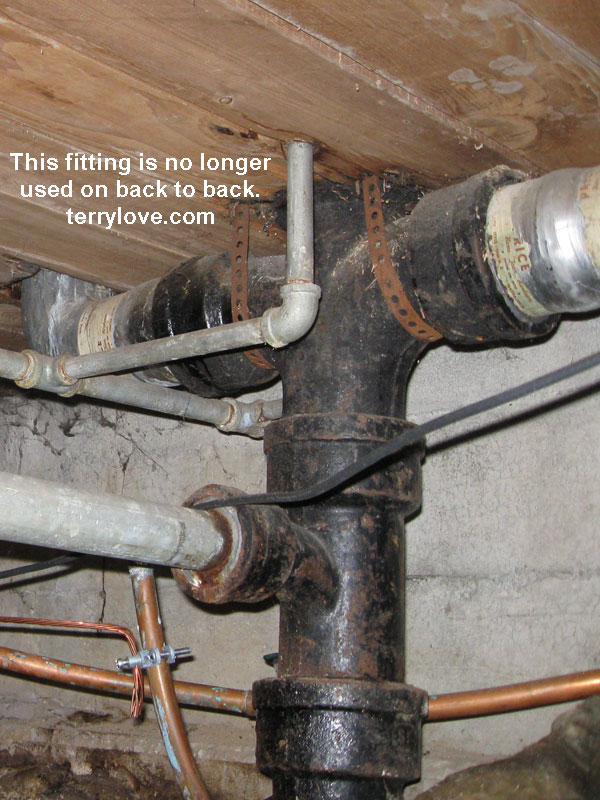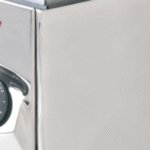Have you ever noticed that your toilet bowl gradually loses water, leaving you puzzled and maybe a little frustrated? You’re not alone.
This common household issue can be more than just an inconvenience. It might hint at underlying problems that, if ignored, could lead to bigger headaches down the road. Imagine waking up one morning to find an unexpected mess or facing a spike in your water bill.
You deserve peace of mind and a home that functions flawlessly. By understanding why your toilet bowl is losing water slowly, you can take control and ensure everything flows smoothly. Dive into this article to uncover the causes and solutions, so you can keep your bathroom in perfect order.

Credit: www.angi.com
Common Causes
Have you ever noticed your toilet bowl mysteriously losing water? It’s a common issue that can leave you puzzled. Understanding the causes can save you time and prevent bigger problems. Let’s dive into some of the usual suspects behind this frustrating phenomenon.
Evaporation Effects
Evaporation is a natural process. You might not think about it, but it happens right under your nose. If your bathroom is warm and dry, the water in your toilet bowl can evaporate faster than you expect. It’s like watching a pot of water on the stove slowly disappear, only less obvious.
Consider your bathroom environment. Is the heating system cranked up? If so, that could be your culprit. Keeping a steady temperature and humidity can help reduce evaporation.
Leakage Issues
Leaks can be sneaky. A tiny crack or loose seal can cause water to trickle away unnoticed. You might think your toilet is all sealed up, but even the smallest gap can lead to water loss.
Check for leaks by adding a few drops of food coloring to the tank. Wait for about 30 minutes without flushing. If the color appears in the bowl, you’ve got a leak to deal with.
Damaged Flapper
The flapper is a crucial part of your toilet. It’s the rubber seal inside the tank that controls the flow of water into the bowl. If it’s damaged or worn out, it can cause slow leaks, leading to a gradual loss of water.
Inspect the flapper for wear and tear. Is it cracked or misshapen? Replacing it is a simple fix that can stop your toilet from losing water. Don’t overlook this small yet significant part.
Have you checked these common causes in your toilet? If not, why not start today? Addressing these issues can save you from unnecessary stress and water waste.

Credit: terrylove.com
Diagnosing The Problem
A toilet bowl that slowly loses water can be frustrating. Understanding why it happens is crucial. The issue might seem minor, but it can lead to bigger problems. To solve it, you need to diagnose the root cause. This process involves a few key steps. By following them, you can identify the source of the problem. Let’s dive into the details.
Checking For Leaks
Leaks are a common cause of water loss in toilet bowls. To check for leaks, start with a simple test. Add a few drops of food coloring to the tank. Wait for about 15 minutes. If the color appears in the bowl, there’s a leak. This means water is escaping from the tank. Fixing this early can prevent water waste and higher bills.
Inspecting The Flapper
The flapper plays a key role in controlling water flow. Open the tank lid and look at the flapper. Ensure it seals properly when closed. A worn or misaligned flapper can cause water to leak into the bowl. Replace the flapper if it’s damaged. Ensure it fits snugly for a tight seal.
Evaluating The Fill Valve
The fill valve regulates water entering the tank. A faulty fill valve may cause water level issues. Check for any blockages or wear. Listen for unusual sounds, like hissing. These sounds indicate a problem with the valve. Adjust or replace the fill valve if necessary. Proper function ensures the right water level in your tank.
Simple Diy Solutions
Dealing with a toilet bowl that slowly loses water? You can fix it yourself. Simple DIY solutions can often solve this common issue. Save money and avoid the hassle of calling a plumber. Try these easy fixes before seeking professional help.
Adjusting The Water Level
The water level in the tank affects the bowl. Check it first. Lift the tank lid and locate the float. The float controls the water level. Adjust the float arm up or down. This increases or decreases the water in the tank. Ensure the water level is about an inch below the overflow tube. If it’s too low, the bowl may not fill properly.
Replacing The Flapper
A worn-out flapper can cause water loss. It’s a common issue. The flapper is a rubber valve at the tank’s bottom. It controls water flow into the bowl. Turn off the water supply. Drain the tank by flushing. Remove the old flapper. Take it to the hardware store. Find a matching replacement. Install the new flapper. Ensure it seals tightly.
Fixing The Fill Valve
The fill valve controls water entering the tank. It can wear out over time. Listen for a running noise. This might indicate a faulty fill valve. Turn off the water supply. Remove the old fill valve. Install a new one. Follow the instructions on the package. Ensure all connections are tight. Turn the water back on. Test the toilet by flushing.
Tools And Materials Needed
Fixing a toilet bowl that slowly loses water requires basic tools and materials. A wrench, plunger, and replacement parts are essential. Also, having a sponge and bucket nearby helps manage spills effectively.
When tackling the issue of a toilet bowl that slowly loses water, having the right tools and materials at your disposal can make all the difference. Whether you’re a seasoned DIY enthusiast or a first-timer, gathering the essentials beforehand can save you time and frustration. Let’s dive into what you’ll need to get this job done efficiently and effectively.Essential Tools
To fix a toilet bowl that slowly loses water, start with a few basic tools. A screwdriver is crucial, especially if you need to remove the toilet tank lid or adjust any internal components. An adjustable wrench will come in handy for loosening nuts and bolts, which might be necessary if you need to replace parts like the flapper or fill valve. A plunger may seem obvious, but it’s a fundamental tool for clearing any potential blockages in the toilet’s trap or drain. You might think a plunger is only for clogs, but it can also help assess if a blockage is causing the water loss. A flashlight is also useful for inspecting the tank’s interior, ensuring you don’t miss any potential leaks or damages.Recommended Materials
Replacing worn-out parts is often the solution for a toilet bowl that loses water. A new flapper is a must-have; over time, flappers can become brittle or warped, leading to leaks. Make sure to choose one that fits your toilet model. Toilet tank repair kits are widely available and include a variety of components that might need replacement, such as fill valves and seals. Plumber’s tape can be a lifesaver for ensuring tight seals on any threaded connections, preventing leaks. A cleaning solution can help you remove any mineral deposits or debris that might be causing parts to malfunction. Finally, having a bucket to catch any water when you’re working inside the tank will keep your workspace tidy. Have you checked your toolkit lately? You might be surprised at how many of these items you already have on hand. By being prepared with these tools and materials, you can tackle the problem with confidence and efficiency.Preventive Maintenance Tips
Toilet bowl water loss can cause inconvenience and waste resources. Regular care can help prevent issues and maintain efficiency. Follow these preventive maintenance tips to keep your toilet bowl in top condition. Simple steps can save water and money.
Regular Inspections
Check your toilet for leaks every month. Use food coloring in the tank. Wait 10 minutes without flushing. If color appears in the bowl, you have a leak. Inspect the flapper and replace it if worn. Also, check the fill valve for proper function. Adjust it if water level is too high or low. Ensure the toilet is securely mounted. Tighten loose bolts to prevent movement.
Water Conservation Techniques
Install a low-flow toilet or dual-flush system. These use less water per flush. Consider placing a plastic bottle filled with water in the tank. This reduces the amount of water used each flush. Do not flush items like tissues or wipes. This prevents clogs and saves water. Teach family members to conserve water by using the half-flush option for liquid waste. Encourage shorter flushes and fix leaks promptly. Small changes make a big difference in water conservation.

Credit: reynoldsplumbingrichmond.com
When To Call A Professional
Sometimes, a toilet that slowly loses water needs expert attention. Simple fixes may not solve the problem. Knowing when to call a professional can save time and stress. Experts can handle issues that are beyond a DIY approach. Let’s explore situations that require professional help.
Persistent Issues
Does the water level drop despite repeated attempts to fix it? This may indicate a deeper problem. Persistent issues often need specialized tools and skills. Professionals can identify hidden leaks or faulty parts. Their expertise ensures a thorough inspection and effective solutions.
Complex Repairs
Some toilet problems involve complex repairs. Issues like damaged pipes or faulty internal components can be challenging. Professionals have experience with intricate plumbing systems. They ensure repairs are done correctly and prevent future issues. Their knowledge is crucial for maintaining a well-functioning toilet.
Frequently Asked Questions
Why Is My Toilet Bowl Losing Water?
A leaking flapper or a crack could cause water loss. Check seals and connections for damage.
How Do I Fix A Slow Water Loss In The Toilet?
Inspect the flapper valve. Replace if damaged. Ensure connections are tight. Call a plumber if unsure.
Can A Faulty Fill Valve Cause Water Loss?
Yes, a faulty fill valve may cause water loss. Check for wear and replace if needed.
Is A Slow Water Loss Common In Toilets?
Yes, it’s common. Often due to minor leaks or cracks. Regular maintenance can prevent this issue.
What Are The Signs Of A Toilet Leak?
Look for water stains, hissing sounds, or frequent refilling. These indicate possible leaks. Inspect regularly.
Conclusion
Fixing a toilet bowl that loses water is essential. It saves water and prevents damage. Check for leaks or cracks. Tighten loose parts. Clean the tank regularly. Replace worn-out components promptly. These actions maintain efficient toilet function. Remember, small issues can become big problems.
Regular checks and maintenance help avoid costly repairs. Keep your toilet in good shape. Save money and water. A little care goes a long way. Ensure your bathroom stays dry and hassle-free. Simple steps make a huge difference. Stay proactive.
Enjoy a trouble-free bathroom experience.





